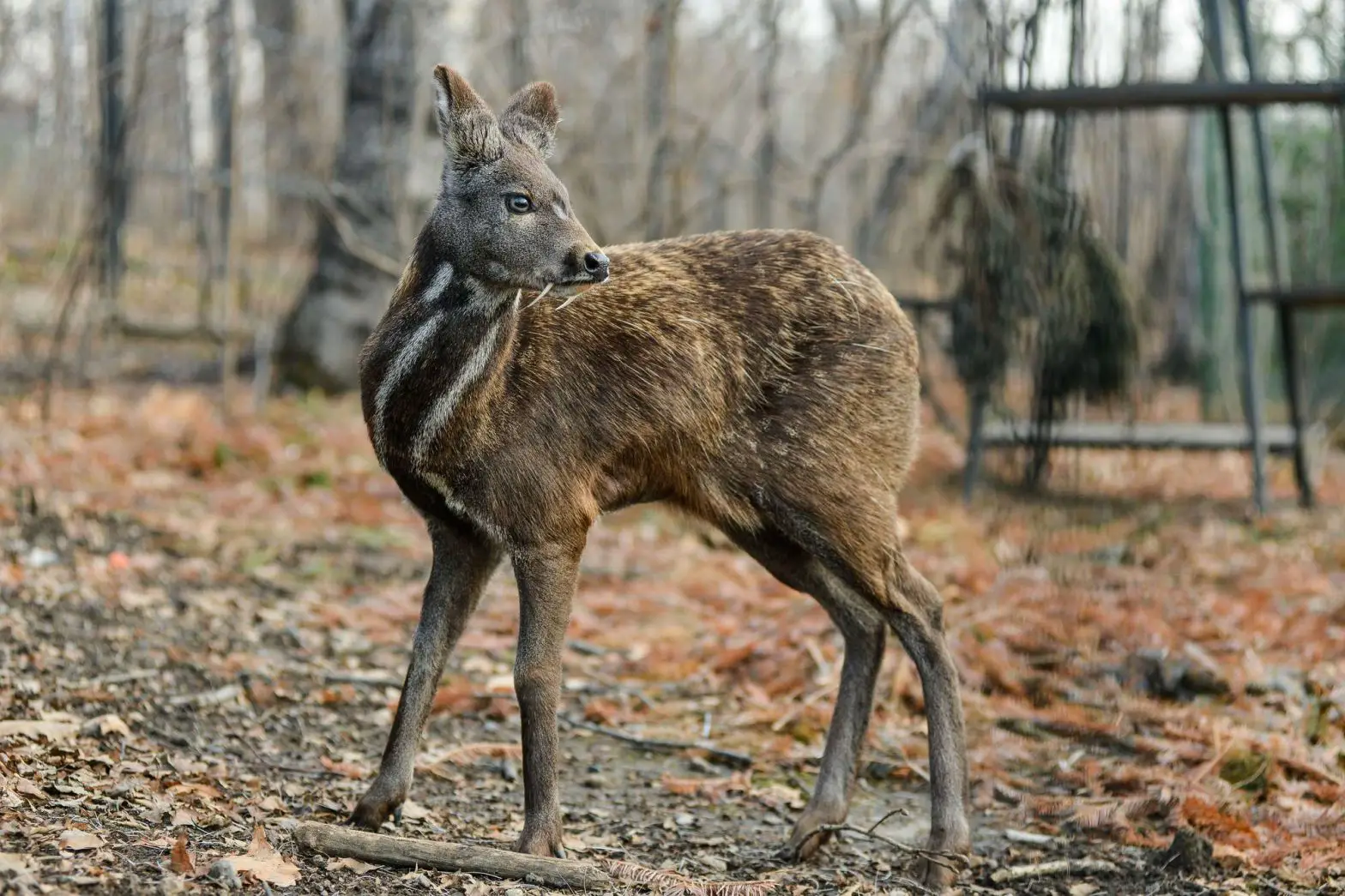Musk (pronounced muhsk) is an animalistic note that perfumers add to their fragrances to give them a profound and intoxicating scent.
Musk is one of those fragrance notes of many facets: it can be described as earthy, woody, and heavy—yet balmy, leathery, and erotic. It comes off as dry and powdery but is somehow also oily and waxy. One thing’s for sure: it’s so rousing, it always makes a statement.
At first, it was obtained from the scent gland of the male musk deer, which secreted a strong odor that would arouse females, attracting them as soon as they’d get a whiff of it. Nowadays, it’s created synthetically and, in rarer cases, obtained from plants.
The gland looks like a sac about the size of a golf ball. It develops in the stag’s abdomen as he grows older and holds the odiferous reddish-brown liquid, which the deer would spray, intending to sexually attract partners, as he roamed through the forest.
That liquid contained muscone, an organic molecule that builds up in the form of an oily liquid that isn’t soluble in water, yet dissolves in alcohol and mixes flawlessly with it.
For centuries, male musk deers would get hunted down to take the scent of musk from them. The gland would get cut off and dried to make a musk pod. The pod itself contained grain that, soaked in alcohol, would yield the scent of musk, which noses would add to their formulations.
When exactly musk was discovered will forever remain an unsolved mystery.
Without a doubt, the deer were hunted for food as soon as humans started to live near them. Their meat, however, has a distinguished taste that doesn’t appeal to every eater—even those thousands of years ago, to whom the term “gourmet” spoke nothing.
Musk deers live in the mountainous forests of China, Siberia, Korea, South Vietnam, and Burma.
According to Anya H. King, author of the 2017 book, Scent from the Garden of Paradise: Musk and the Medieval Islamic World, musk as a smell was initially known only to the people of China and India.
The scent started to make its way to the western world through trade routes in Rome’s late days, around the 3rd century CE.
After the fall of the Roman empire, musk’s spread in the new world continued.
A prized substance among Arabic and Byzantine perfumers, they began to add it to their oriental fragrance formulations, and musk’s allure spread to Europe along the silk and spice routes that made foreign trade possible at the time.
We’ve all watched movies about the nobles of Medieval Europe and seen how kings and queens would lavish in the scent of musk in perforated and decorated metal balls known as pomanders, which they’d place inside cupboards or on windowsills to perfume the air in their rooms.
Naturally-obtained musk was an expensive commodity and a scent only for the wealthy.
Yet humanity’s hunt for the male musk deer nearly brought its entire species to extinction, and, in the early 1980s, governments took measures to limit or ban it altogether.
Nowadays, musk-like fragrance notes are synthetically created in the form of aromatic molecules by laboratories or naturally obtained from a number of alternative sources, including flowers.
In 1888, while he was researching explosive materials, German chemist Albert Baur accidentally came across a strangely familiar and immensely captivating scent.
Baur discovered the musk ketone, a synthetic molecule with a musky smell, which fragrance houses of the Industrial era of the 1900s started adding to their colognes and perfumes.
However, it was soon found to pose health concerns to humans and therefore fell out of use.
In 1926, Croatian-swiss scientist and soon-to-be Nobel Prize winner Lavoslav Ružička managed to synthesize muscone, the organic compound produced in the male musk deer’s scent gland.
Ružička’s accomplishment led to the emergence of what we now know as “white musks,” a group of synthetic ingredients with a whitish color that finally allowed perfumers to make cruelty-free musky scents at scale.
Synthetic musks—the chemical compounds used to add a musky base note to present-day fragrances—have a heavy, earthy, and woody scent. Many would describe their scent as “clean,” lacking the characteristically animalistic and vaguely fecal notes of animal musks.

